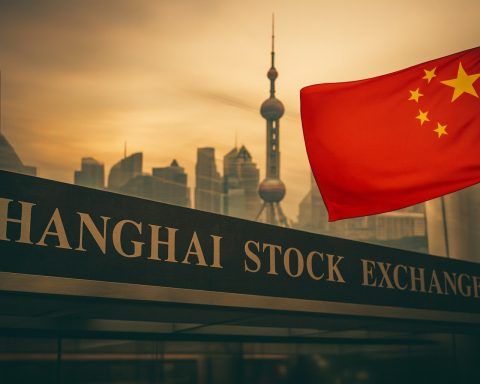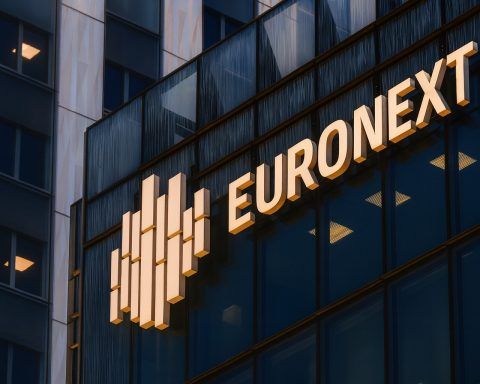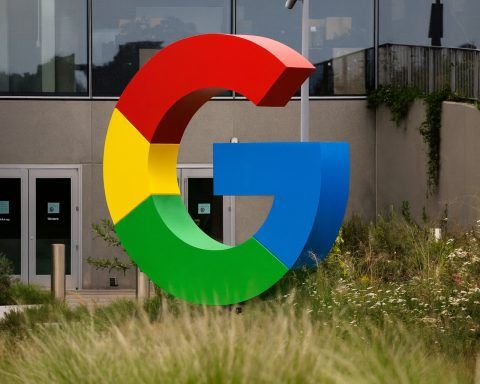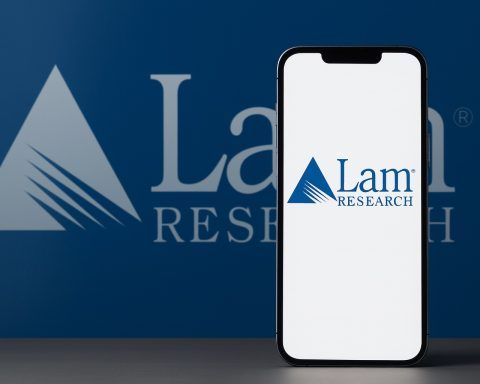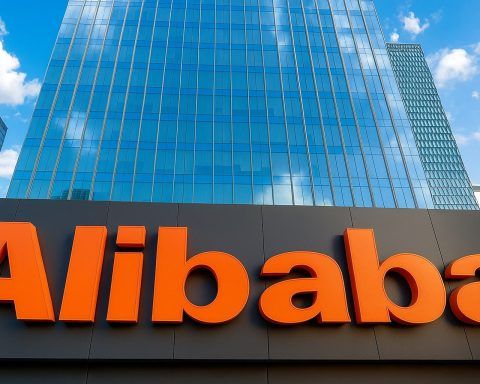- Meta’s AI power play: the first mega-cluster, Prometheus, comes online in 2026, with a second (Hyperion) scaling to 5 gigawatts later, and Zuckerberg boasts that one cluster covers a significant part of Manhattan’s footprint.
- Zuckerberg personally leads a “talent raid” to hire top engineers after Meta invested $14.3 billion in Scale AI, and in 2025 Meta raises capital expenditures to $64–72 billion.
- Meta’s crackdown on unoriginal content includes removing about 10 million imposter profiles and penalizing over 500,000 accounts, while testing a feature to link duplicates to the original creator.
- Meta faces an $8 billion shareholder lawsuit in Delaware Chancery Court over the 2018 Cambridge Analytica scandal, seeking repayment of roughly $8 billion including a $5 billion FTC fine from 2019.
- Amazon’s Prime Day 2025 spanned four days (July 8–11) and generated $24.1 billion in U.S. online spending, up 30.3% year over year and beating Adobe’s forecast of $23.8 billion.
- The Pentagon awarded up to $200 million contracts to Alphabet’s Google, OpenAI, Anthropic, and Elon Musk’s xAI to develop agentic AI for military and security workflows.
- Google’s Windsurf deal pays $2.4 billion to hire Windsurf’s CEO and engineers into DeepMind and to license Windsurf’s AI‑development technology, with Windsurf valued at about $1.25 billion last year.
- Nvidia’s valuation briefly topped $4 trillion, making it the world’s most valuable chipmaker by market cap, as CEO Jensen Huang visits China on July 16 and the company forecasts a 64% jump in revenue this year.
- Elon Musk’s xAI secures a Pentagon contract up to $200 million with Microsoft Azure, SpaceX plans to invest $2 billion in xAI as part of a $5 billion fundraising round, and a November 6 Tesla shareholder vote will decide whether Tesla can invest in xAI, with Grok already being integrated into Tesla vehicles.
- Five EU member states—France, Germany, the Netherlands, Italy, and Sweden—will pilot an age‑verification app this fall using a government‑backed digital ID to enforce 13+ rules on social platforms under the Digital Services Act, with a potential EU‑wide rollout.
The tech world was abuzz on July 14, 2025, as industry giants unveiled ambitious AI investments, posted record-shattering sales, and grappled with regulatory challenges. From Silicon Valley to Washington, D.C., Big Tech’s biggest players – Apple, Google, Microsoft, Amazon, Meta, Nvidia, and more – made headlines with bold moves in artificial intelligence, e-commerce, and policy. Here’s your comprehensive roundup of the day’s major tech developments.
Meta Bets Big on AI and Cleans Up Content
Meta’s AI Power Play: CEO Mark Zuckerberg announced plans to spend “hundreds of billions” on massive AI supercomputing data centers as part of a new “Superintelligence Labs” division [1] [2]. The first mega-cluster (dubbed Prometheus) comes online in 2026, with another (Hyperion) scaling up to 5 gigawatts later – and “just one of these covers a significant part of the footprint of Manhattan,” Zuckerberg boasted on Threads [3]. Justifying the enormous spend, he pointed to Meta’s robust ad profits: “We have the capital from our business to do this,” he said [4]. Investors seemed reassured – Meta’s stock ticked up ~1% on the news [5] – but analysts note the payoff could take time. “At this scale, the investment is more oriented to the long-term competition to have the leading AI model,” one analyst remarked, cautioning it may take years to materialize [6]. In the meantime, Meta is aggressively recruiting AI talent; Zuckerberg has personally led a “talent raid” to hire top engineers (from Scale AI’s Alexandr Wang to former GitHub CEO Nat Friedman) after investing $14.3 billion in Scale AI [7]. Meta even hiked its 2025 capital expenditures to $64–72 billion to ensure it stays ahead of OpenAI and Google in the AI arms race [8].
Crackdown on “Unoriginal” Content: On the social media front, Meta unveiled new measures to purge “unoriginal” and spam content on Facebook [9]. The company says it has removed around 10 million imposter profiles this year that were posing as popular creators [10], and it has penalized over 500,000 accounts for “spammy behavior or fake engagement,” such as reposting others’ videos without adding value [11]. Offending accounts will see their posts’ reach slashed and lose access to monetization programs [12]. Meta even began testing a feature to link duplicate videos back to the original creator to ensure the rightful source gets credit [13]. This crackdown follows YouTube’s similar policy update against mass-produced, repetitive content (often made easier by generative AI) [14]. Meta emphasizes it won’t punish harmless re-shares like reaction videos or trend memes – the focus is on blatant content thieves and spam farms. The tougher stance comes amid growing user backlash over erroneous takedowns by Meta’s automated systems [15]. (A petition with nearly 30,000 signatures is demanding Meta fix its AI-driven moderation mistakes [16].) So far, Meta hasn’t publicly addressed those complaints, but the new effort shows it’s feeling pressure to improve content quality on its platforms.
Privacy Showdown Looms: Meta also faces a legal battle this week as Zuckerberg is set to testify in an $8 billion shareholder lawsuit stemming from the 2018 Cambridge Analytica scandal [17]. In this unusual trial – kicking off in Delaware Chancery Court – investors accuse the CEO and his leadership team of operating Facebook as an “illegal data harvesting enterprise” that violated a 2012 FTC consent decree to protect user privacy [18] [19]. Shareholders are demanding that Zuckerberg, former COO Sheryl Sandberg, and other board members personally repay ~$8 billion in costs and fines Meta incurred over the scandal [20] – including the record $5 billion FTC fine in 2019 [21]. The case marks a rare attempt to hold a Big Tech CEO directly liable for privacy lapses. Meta has called the suit “without merit,” but with Zuckerberg as a star witness, the trial is drawing intense scrutiny. It’s a dramatic reminder that even as Meta pours money into future tech, its past privacy missteps continue to haunt it.
Amazon’s Prime Day Smashes Records
Record Sales Bonanza: Amazon is celebrating its biggest Prime Day shopping event ever, after a four-day extravaganza (July 8–11) that saw U.S. online spending soar to $24.1 billion [22]. That’s roughly two Black Fridays’ worth of sales in one go – a 30.3% jump year-on-year, according to Adobe Analytics data [23]. (Notably, the final tally even beat Adobe’s forecast of $23.8 billion [24].) Amazon kept exact figures under wraps, saying only that 2025’s Prime Day was “the biggest ever” with record-breaking sales and more items sold than any prior year [25]. However, the event’s expansion to 4 days (up from the usual 2) makes direct comparisons tricky [26]. What’s clear is that shoppers came out in force – and they had help from AI.
AI + Influencers Drive Shopping: In a sign of the times, generative AI tools played a notable role in this year’s sale. Adobe reported that retail traffic driven by AI assistants (like shopping chatbots and AI-powered search) spiked 3,300% compared to last year [27]. While AI still accounts for a smaller slice of shopping traffic than channels like search or email, this surge suggests consumers are rapidly adopting AI helpers to hunt for deals [28]. Meanwhile, social media influencers proved to be powerful sales catalysts, responsible for nearly 19.9% of online retail sales during Prime Day [29]. That influencer-driven share was up 15% from last year, with data showing that recommendations by popular creators converted browsers into buyers 10× more effectively than generic social media ads [30]. In other words, TikTokers and YouTubers had a very good Prime Day. Traditional paid search marketing also grew (accounting for ~28.5% of sales, +5.6% YoY) [31], but the big story was how newer channels – AI and influencer promos – supercharged the shopping frenzy.
Amazon’s own statements were light on detail, focusing on highlights like the “best ever” performance of its marketplace sellers and the success of exclusive Prime member deals. One thing Amazon did confirm: it intentionally stretched Prime Day to a 4-day event this year to give shoppers more time, which helped inflate those record numbers [32]. The move paid off, though it blurs the line between a time-bound flash sale and a nearly week-long festival of online consumption. Analysts will be parsing the data for weeks, but for now, Amazon can claim victory – and rivals like Walmart and Target also rode the Prime Day halo, offering their own mid-July sales that contributed to the overall $24B+ e-commerce haul [33]. The mid-year retail boom sets an upbeat tone heading into back-to-school and holiday shopping seasons, even as broader economic headwinds persist.
Alphabet/Google Doubles Down on AI Deals
Pentagon Picks Google for AI: Google notched a significant win in the race to supply advanced AI to government. The U.S. Department of Defense awarded Alphabet’s Google, OpenAI, Anthropic, and Elon Musk’s xAI contracts worth up to $200 million each to incorporate cutting-edge AI into military and security workflows [34]. The Pentagon’s Chief Digital and AI Office said these awards will help it develop “agentic AI” systems to tackle critical national security challenges [35]. “The adoption of AI is transforming the DoD’s ability to support our warfighters and maintain strategic advantage over our adversaries,” said DoD Chief AI Officer Doug Matty, underscoring the urgency of the project [36]. This public-sector push comes on the heels of White House directives to expand federal AI usage – in fact, President Donald Trump recently revoked a 2023 Biden-era executive order that had imposed risk assessments on AI in order to accelerate deployment [37]. (Trump, now in his second term, has made tech competitiveness a pillar of his agenda – more on that below.) Google’s cloud division will now be working alongside OpenAI’s and Anthropic’s systems inside the DoD, a big prestige boost for all involved. Separately, Musk’s startup xAI announced a new “Grok for Government” offering to make its AI models (including its latest Grok 4 chatbot) available to federal and state agencies [38]. All told, Silicon Valley’s AI unicorns are rapidly entwining themselves with Washington’s defense establishment – a partnership that, while lucrative, will invite scrutiny over issues of transparency and bias in military AI systems.
$2.4B Talent Grab – Google’s AI “Transfer Fee”: In the private sector, Google made headlines for a different kind of AI investment: a reported $2.4 billion deal to hire the core team of an AI coding startup called Windsurf [39]. Rather than outright acquire the company, Google is effectively paying an enormous sum to bring Windsurf’s CEO and top engineers into Google DeepMind – a move likened to a sports team paying a massive transfer fee for star players [40]. The deal also secures licensing rights to Windsurf’s AI-assisted software development technology for Google [41]. This unconventional acqui-hire, first reported by The Wall Street Journal, highlights the frenzied competition for AI talent. Tech giants are shelling out astronomical compensation packages to lure AI experts; in fact, Meta has offered pay deals up to $100 million for top machine-learning researchers, according to Semafor [42]. Google’s wager shows it’s willing to spend big to fortify its AI dominance (and keep prized innovators out of rivals’ hands). Windsurf’s investors are certainly pleased – they had valued the startup at $1.25 billion last year [43], and now see Google validating their bet. “High-profile deals and multi-million-dollar pay packages” have become the norm as Alphabet, Meta and others race to build AI that could outthink humans [44]. Google’s latest hire will bolster its AI coding efforts (a hint at new products for developers down the line), and signals to Wall Street that Google intends to remain a leader in AI infrastructure alongside its work on consumer-facing AI like Bard. Of course, such mega-deals could also draw antitrust attention – regulators tend to frown on anything resembling talent poaching pacts among big competitors. Google skirted that by structuring Windsurf as a talent acquisition rather than buying the company outright (which, incidentally, Cognition AI – a smaller enterprise software firm – swooped in to do for Windsurf’s remaining business operations) [45] [46]. The message from Mountain View: whatever the cost, Google doesn’t intend to lose the AI race.
Other Google News: In a quieter announcement, Google and a group of tech and climate partners launched a new coalition aimed at scaling up carbon removal projects in oceans and underground rock formations [47]. (The initiative, backed by Alphabet and other companies, will fund technologies to trap CO₂ using natural pathways like mineralization and oceanic absorption.) While not grabbing as many headlines as flashy AI news, it shows Google is still tending to its sustainability goals alongside AI ambitions. Also, on the search front, Google’s latest core algorithm update (June 2025) continued to cause ranking volatility into mid-July [48], keeping SEO observers on their toes. And Google’s marketing AI tools (for advertisers and e-commerce) reportedly got a post-Prime Day workout – reflecting how the company’s AI reach extends beyond research labs into the nuts and bolts of online commerce.
Microsoft Focuses and Streamlines
Restructuring for the AI Era: Microsoft had a relatively low-key day in the news cycle, but recent developments set the context for its strategy. In early July, Microsoft confirmed layoffs of about 9,100 employees – roughly 4% of its workforce – in yet another round of cuts aimed at restructuring [49]. The cuts hit divisions across the company, including significant layoffs in Microsoft’s Xbox gaming studios (with some projects like Perfect Dark reportedly canceled) [50]. Xbox chief Phil Spencer told employees the shake-up would “allow us to focus on strategic growth areas” and remove management layers to boost agility [51]. Those “growth areas” are unmistakably centered on artificial intelligence and cloud services. CEO Satya Nadella has made it clear that infusing AI into every Microsoft product – from Office apps to the Azure cloud – is the company’s north star. Microsoft’s Copilot AI (an assistant based on OpenAI’s GPT-4) is being woven deeper into Windows and Microsoft 365, and the company is reportedly readying new AI features to unveil at its annual Inspire partner conference later this month. Despite short-term job cuts, Microsoft’s longer-term bet is that AI will open up new opportunities (and revenue streams) in enterprise software, search, and beyond. Investors seem on board – Microsoft shares are up ~40% year-to-date, reflecting optimism about its AI-enhanced product lineup and the successful integration of OpenAI’s tech. While no major Microsoft-specific announcements dropped on July 14, the company’s quiet period before earnings likely contributed to the lull. Wall Street is eagerly awaiting Microsoft’s late-July earnings report to gauge how its heavy AI investments (and recent cost trimming) are impacting the bottom line. For now, Microsoft is letting others make splashy headlines, as it methodically executes on Nadella’s vision of an “AI-first” Microsoft.
Apple Faces Market Headwinds – and Teases What’s Next
iPhone Demand Dips Slightly: Apple found itself navigating a mixed landscape, as new data showed global smartphone sales growth sputtering. Research firm IDC reported that worldwide smartphone shipments inched up just 1% in Q2 2025 (295.2 million units) amid soft consumer demand and U.S.–China tariff uncertainties [52] [53]. Many price-conscious buyers held off on upgrades, and China’s market saw an outright decline despite government phone subsidies [54]. Apple, in particular, saw a roughly 1% drop in iPhone unit sales in China during the quarter [55] – a modest dip, but noteworthy given China is Apple’s third-largest market. IDC analysts said economic angst and import tariffs have been “compressing demand at the lower end” of the smartphone segment, especially for budget Android handsets [56]. High-end brands like Apple have been more insulated, but even they aren’t totally immune to a global spending slowdown. Still, industry experts see reasons for optimism. “In the face of ongoing political challenges, the impact of war, and the complexities posed by tariffs, the 1% growth in the smartphone market stands as a critical indicator that the market is poised to return to growth,” noted IDC research director Anthony Scarsella, arguing that simply avoiding a downturn is a positive sign [57]. In other words, smartphone demand may have bottomed out and could rebound if macro conditions improve. Apple’s strategy of pushing premium devices (and raising average prices) has helped offset volume softness – and indeed, IDC observed that manufacturers are increasingly adding AI features to mid-range phones to entice consumers to pay more [58]. All eyes will be on Apple’s earnings next month to see if services revenue and high-end device sales (think MacBooks and iPads) picked up any slack from flat iPhone volumes.
Peek into Apple’s Pipeline: Even as current sales cool, Apple fans got tantalizing hints about the next big thing from Cupertino. A new analysis from UBS (reported by Fortune) suggests Apple’s first foldable iPhone is on the horizon – slated for 2026 – and could debut at a lower-than-expected price around $1,800 [59] [60]. That’s “cheap,” relatively speaking, for Apple – roughly on par with Samsung’s premium foldables. UBS’s teardown of Samsung’s Galaxy Z Fold found Bill of Materials costs around $790, and it believes Apple can achieve a similar part cost (~$759) by leveraging its supply chain efficiencies [61]. Early reports indicate Apple is targeting a book-style “iPhone Fold” in the second half of 2026, with an initial production run of 10–15 million units [62]. Priced at $1,800–$2,000 (much higher than any current iPhone), it would instantly become Apple’s most expensive handset. But UBS thinks Apple might surprise with a sub-$2,000 tag – accepting slightly lower margins to broaden adoption [63]. The mere prospect of an Apple foldable is already generating buzz, as it would mark Apple’s entry into a niche but growing category. Foldable phone shipments globally are still small (a few percent of the market) and recent growth had even shown signs of fatigue in 2024–25. High prices and durability concerns have kept them from mainstream success [64]. Yet, analysts say Apple’s entry could “reignite interest” and validate foldables much like the iPad did for tablets years ago [65] [66]. Apple’s late-mover strategy – waiting for foldable tech to mature, then swooping in with a polished product – could allow it to avoid the pitfalls early adopters faced (hinge issues, screen creases, etc.) [67] [68]. Besides phones, rumor mills suggest Apple might apply foldable screens to MacBooks or iPads down the line, aligning with a broader industry trend towards bendable displays. For now, Apple is keeping mum officially, focusing on the imminent launches of the iPhone 15s and Apple Watch X this fall. But the fact that Tim Cook’s team is quietly prepping a folding iPhone indicates Apple is already planning how to reignite device sales in the back half of the decade. And investors, having seen Apple stock slide ~18% in the first half of 2025 amid AI hype elsewhere [69], would surely welcome a blockbuster new device category from the world’s most valuable brand (well, formerly most valuable – see Nvidia below).
Nvidia Hits $4 Trillion as AI Frenzy Peaks
Stock Market Supernova: Graphics chip leader Nvidia’s valuation briefly topped an astonishing $4 trillion last week, a first for any chipmaker [70]. (For context, that’s more than the GDP of Germany, and vaults Nvidia past Apple’s ~$3.5 trillion to become the world’s most valuable company by market cap.) Nvidia’s shares have been on a tear throughout 2023–25, quintupling in value as the company emerged as the chief arms supplier of the AI boom. Its GPUs are the brains behind virtually every major AI model – from ChatGPT to self-driving cars – creating insatiable demand that has led to shortages of Nvidia chips worldwide. The $4 trillion milestone solidifies Nvidia’s status as “Wall Street’s central player” in the race to dominate AI technology [71], as Reuters put it. Investors are betting that Nvidia’s near-monopoly in high-end AI silicon will translate to years of explosive growth (and they’ve been emboldened by Nvidia’s own forecasts of a 64% jump in revenue this year). CEO Jensen Huang, who co-founded Nvidia in 1993, is now personally worth over $200 billion – recently surpassing Warren Buffett on the global rich list – thanks to the stock’s epic surge [72]. Of course, a valuation this lofty has skeptics cautioning that Nvidia’s stock may be overheated, vulnerable to any slowdown in AI spending. But for the moment, Nvidia is the market’s ultimate AI pure play, and its rally encapsulates the euphoria (and FOMO) around generative AI’s potential.
China Risks & CEO’s High-Wire Act: Even as Nvidia basks in market glory, it faces serious geopolitical challenges. Since 2022, the U.S. government has steadily tightened export controls on Nvidia’s most advanced chips to China over national security concerns [73]. The restrictions already banned Nvidia’s A100 and H100 datacenter GPUs from China last year; then earlier in 2025 the U.S. banned sales of Nvidia’s “H20” AI chips – which were a neutered China-specific model – effectively cutting off all top-tier AI hardware [74]. These moves aim to prevent China’s military from leveraging American AI tech, but they also threaten one of Nvidia’s key markets. In the fiscal year ending January, China accounted for $17 billion of Nvidia’s revenue (~13%) [75]. Chinese tech giants – from Alibaba and Baidu to countless startups – rely heavily on Nvidia GPUs (and Nvidia’s proprietary CUDA software platform) for their AI projects [76]. With U.S. sanctions limiting supply, a grey market for Nvidia chips has flourished in China, and local players like Huawei are scrambling to develop rival chips. Jensen Huang has walked a fine diplomatic line, expressing compliance with U.S. rules while also calling China a “very important market” for Nvidia. This week, Huang is personally visiting China in a bid to maintain Nvidia’s foothold. The company confirmed that Huang will host a media briefing in Beijing on July 16 – his second trip to China this year – following meetings in April where he stressed Nvidia’s commitment to Chinese partners [77] [78]. The visit is being closely watched. In fact, two U.S. senators sent Huang a public letter on Friday urging caution – essentially warning him not to cooperate with any Chinese firms that might funnel technology to the PLA (People’s Liberation Army) [79]. They specifically asked Huang to avoid companies on the U.S. export blacklist and to prioritize national security over business deals [80]. Huang’s team says the trip’s focus is on showcasing Nvidia’s latest products to domestic developers and reaffirming support for Chinese customers within the bounds of U.S. law. Still, the optics are sensitive. Huang, ever the diplomat, is likely to emphasize how Nvidia’s tech (like its new GH200 Grace Hopper superchips) can help China’s commercial AI aspirations without empowering military uses. Whether that nuanced message satisfies Washington remains to be seen. Notably, Nvidia’s stock price in recent weeks has seesawed on rumors of even stricter U.S. bans (some lawmakers want to block all AI chip sales to China, no exceptions), versus hopes that Nvidia might get waivers or China might approve rival mergers (e.g., AMD’s Xilinx deal) to alleviate chip shortages. The bottom line: Nvidia’s future growth heavily depends on navigating U.S.–China tensions. For now, Huang is attempting to “keep a foothold” in China [81] without stepping on a political landmine. Given Nvidia’s $4T valuation rests on continued global AI adoption, both Silicon Valley and Wall Street will be watching Huang’s Beijing visit – and any resultant U.S. policy responses – with great interest.
On a related note, Nvidia’s CEO weighed in on the AI job debate during an interview, pushing back on doomsayers. In a Fox Business segment, Huang argued that AI will “create more jobs” than it displaces long-term [82], countering the notion (voiced by some tech leaders) that AI could lead to mass unemployment. “There will be changes in the workforce, yes, but AI is a tool that will enhance human productivity,” Huang said, predicting new roles will emerge for managing and collaborating with AI systems [83]. It’s a familiar Silicon Valley refrain, but coming from the man whose chips power AI, it carries weight. Huang’s take aligns with Microsoft’s Satya Nadella, who recently said AI “will fundamentally change every job” but “could add to GDP, and lead to net job growth”. Of course, skeptics point out that even if AI creates jobs, they may not appear in the same sectors or locales where jobs are lost – posing serious societal challenges. Nonetheless, Huang’s optimism is another indicator of Big Tech’s narrative: AI is an opportunity, not just a threat. As Nvidia breaks records and expands facilities (it just inked a deal to double its footprint in Austin, Texas, to accommodate growth [84]), the company is positioning itself not only as the beneficiary of the AI revolution, but as a cheerleader for its positive potential.
Musk’s Empire: Tesla & xAI Converge, Government Deals Flow
Tesla Investors to Vote on xAI Tie-Up: Elon Musk spent the day stirring the pot across several of his ventures. Most prominently, Musk revealed plans for Tesla to potentially take a stake in his new AI startup, xAI. In a series of social media posts, Musk said he will hold a Tesla shareholder vote on whether the automaker can invest in xAI [85] [86]. He flatly ruled out merging Tesla and xAI, but indicated he does want Tesla to financially support xAI’s mission. “If it was up to me, Tesla would have invested in xAI long ago,” Musk quipped on X (the platform formerly known as Twitter) [87] – a striking comment that highlights Musk’s unique position as chief of both companies. Why the formality of a shareholder vote? Likely because any major related-party deal (Tesla investing billions in a Musk-owned startup) would require investor approval and board sign-off to avoid conflicts of interest. Musk set November 6 as the date for a Tesla special meeting where this proposal will be on the agenda [88], virtually guaranteeing a media circus in the lead-up. The intertwining of Tesla and xAI is already well underway technologically: Musk has started rolling out xAI’s “Grok” chatbot into Tesla vehicles’ interfaces [89], letting drivers query an AI assistant. And recall that after Musk bought Twitter in 2022, he famously borrowed engineers from Tesla to help retool the social network (now called X) [90]. Musk’s companies often share talent and technology, blurring the lines between them. Now he wants to add financial entanglement to that mix.
The announcement followed a Wall Street Journal report that Musk’s rocket company SpaceX will invest $2 billion in xAI as part of a $5 billion fundraising round [91]. In other words, Musk is leveraging his more established firms (SpaceX, and soon perhaps Tesla) to bankroll his AI venture’s war chest – all aimed at competing with OpenAI, Google, and Meta in the race for advanced AI. Musk has cast xAI as building a “maximally curious” AI aligned with human interests, and has been an outspoken critic of OpenAI’s direction (he parted ways with OpenAI years ago). With $5 billion in funding reportedly on the table, xAI would instantly become one of the best-capitalized startups in the world. Where is all that money going? Likely into massive computing power – xAI has been buying up thousands of GPUs (reportedly from Nvidia, though Musk has lamented supply constraints) – and talent. Musk knows he’s late to the AI game, so he’s moving fast to catch up. Tesla’s involvement could be a game-changer: Tesla has extensive real-world AI expertise (in self-driving car vision systems and its Dojo supercomputer) that could complement xAI’s research. On the flip side, some Tesla investors worry Musk is stretching himself too thin or could distract Tesla with yet another side project. Musk tried to assuage those fears, saying a direct Tesla-xAI partnership would benefit the automaker. Indeed, analysts at D.A. Davidson noted Tesla already taps xAI’s advanced models, and if xAI emerges a winner in AI, Tesla could gain financially from its stake [92]. “xAI will require tens of billions of dollars of investment… With a board that has been very supportive of Mr. Musk in the past, we would expect that Tesla capital to be available to xAI,” said analyst Gil Luria, essentially predicting shareholders will approve Musk’s plan [93]. Given Musk’s cult-like investor following, they probably will – though it raises governance eyebrows when a CEO uses one public company to fund his privately held startup. Tesla’s stock didn’t move much on the news, as investors are already numb to Musk’s juggling of ventures. But come November, expect lively debate on how entwined Tesla and xAI should become.
xAI and Google Land DoD Contracts: As mentioned above, Musk’s xAI notched a notable victory by securing a Pentagon AI contract worth up to $200 million (in partnership with Microsoft’s Azure) [94]. For a startup barely a year old, that’s huge validation – xAI’s “Grok” AI models will be deployed in defense scenarios alongside tech from more established players [95]. Musk tweeted that xAI would focus on ensuring its AI is “maximally loyal to the United States” in defense applications – a clear nod to differentiate from rivals with foreign ties. In a tongue-in-cheek exchange on X, Musk also joked that xAI’s Grok is “the smartest AI in the world” (a claim widely disputed in AI circles) but admitted its usage “still lags ChatGPT” for now [96]. The Pentagon deal, plus the new funding, could accelerate Grok’s development to close that gap. Notably, this government contract also benefits Google (which will provide cloud infrastructure and its own AI tech) [97] – a rare alignment of Musk’s and Google’s interests, given their recent rivalry in AI and self-driving cars. It shows that when it comes to lucrative federal contracts, even fierce competitors are willing to collaborate.
Twitter/X and Tesla News: In other Muskiverse updates, Twitter – now rebranded as X – continued its chaotic evolution with Musk hinting at new features and revenue streams (like payments and creator subscriptions) as the platform tries to reverse an ad revenue slump. There’s speculation that xAI’s tech might eventually be integrated into X to fight bots or introduce AI chat functions for users. Over at SpaceX, the company is coming off a successful double-launch week and is reportedly valued at $150 billion in private markets after a recent share sale, making it the U.S.’s most valuable startup. And Tesla, beyond the xAI news, saw its China sales rebound in June after price cuts, easing concerns about demand. Tesla also quietly raised prices on its Model Y in the U.S. this week as inventory levels normalized. With the Tesla Cybertruck launch approaching (first deliveries are expected later this quarter), Musk has plenty on his plate. Yet if July 14 is any indication, Musk will continue to leverage his empire’s crossovers – using one company’s strengths to bolster another – blurring the lines in service of his grand vision (which apparently includes everything from colonizing Mars to creating superhuman AI). It’s unorthodox, but so far, fans and investors have been willing to go along for the ride.
Policy & Regulation: Government Joins the Chat (AI and Chips Edition)
White House Throws $70 Billion at Tech: The U.S. government isn’t leaving all the innovation to the private sector – in fact, it’s trying to put some serious skin in the game. President Donald Trump is set to unveil a sweeping $70 billion investment plan targeting AI and energy projects on July 15, according to administration officials [98]. In a visit to Pittsburgh, Trump will tout initiatives spanning new data centers, power grid upgrades, and AI research hubs as part of the package [99] [100]. The funding is expected to come via a mix of public-private partnerships and federal incentives. This announcement – first reported by Axios – highlights the bipartisan push to keep the U.S. at the forefront of the AI revolution (and perhaps blunt criticism that America is falling behind China’s massive AI spending). It’s also politically timed: Trump will share the stage with GOP Senator David McCormick at a Pennsylvania “Energy and Innovation” summit [101], underscoring the marriage of tech and industrial policy. While details are scant ahead of the official reveal, areas likely to see funding include: AI supercomputing infrastructure (to support both military and civilian R&D), STEM education and training programs for an AI-skilled workforce, subsidies for domestic chip production and quantum computing, and incentives for clean energy tech (like advanced batteries and nuclear fusion, alongside AI for grid management). The $70 billion figure, if it materializes, would mark one of the largest federal tech investments since the Apollo program (for comparison, the CHIPS Act of 2022 put ~$52 billion toward semiconductor manufacturing). It signals that Washington is embracing an industrial policy approach to ensure U.S. leadership in critical technologies. Tech executives have been lobbying for such support, and many welcomed the news. “This is the kind of bold action we need to secure America’s tech future,” said one industry representative. Of course, it also comes amid election-season optics – Trump can campaign on “bringing AI jobs home” and countering China. Notably, Trump’s administration has also been scaling back regulations on AI development, arguing that over-regulation would stifle innovation [102]. He even rescinded an order by predecessor Joe Biden that would have required AI firms to report data usage and algorithmic impacts [103], a move cheered by tech companies but criticized by some AI ethicists. Whether Congress will fully approve all $70 billion remains to be seen, but for now the tech sector is optimistic that a windfall of government contracts and grants is coming its way.
Global Tech Tensions – Malaysia’s Chip Curbs: The ripple effects of the U.S.–China tech war are being felt globally. Malaysia announced a new rule requiring special trade permits for any re-export or transit of high-performance AI chips of U.S. origin [104]. In plain English, Malaysia is closing loopholes that allowed American-made Nvidia or AMD chips to be sneaked into China via third countries. Effective immediately, any transit of advanced U.S. AI chips through Malaysian ports or airports will need a government green light, and authorities must be notified 30 days in advance [105]. “Malaysia stands firm against any attempt to circumvent export controls or engage in illicit trade… violators will face strict legal action,” the Trade Ministry warned in its statement [106]. This move comes after U.S. officials reportedly pressed Malaysia to help stop the flow of AI accelerators into China’s hands [107]. Malaysia, a major electronics hub, found itself caught in the middle as Chinese buyers sought backdoor routes to acquire banned chips. The new permit system aligns Malaysia closer with U.S. policy – a small win for Washington as it tries to rally allies to its tech blockade. It’s also a sign that export controls are becoming a fragmented global framework, where even neutral countries feel compelled to choose sides. Tech industry folks are watching nervously: more such restrictions could lead to supply chain complications and higher compliance costs for chipmakers and systems integrators around the world. For Nvidia, it’s another headache ensuring its A100/H100 GPUs (now considered sensitive dual-use items) don’t leak into black markets. For China, it tightens the squeeze – pushing them to accelerate domestic GPU development. Malaysia’s cooperation could inspire other ASEAN countries (like Vietnam or Singapore) to enact similar measures. In the short term, expect some disruption in the gray market for AI chips and perhaps attempts to route around via other nations. But the broader trend is clear: the tech decoupling between East and West is intensifying, and even historically trade-friendly countries are enacting nationalist tech controls.
Europe and Online Safety: Across the Atlantic, European regulators took a noteworthy step to protect kids online. Officials from five EU countries (France, Germany, the Netherlands, Italy, and Sweden) agreed to pilot a new age-verification app designed to keep minors off adult content sites and enforce age rules on social media [108] [109]. The app, developed in France, uses a government-backed digital ID to verify a user’s age without revealing their identity or personal data to the website. This initiative is part of a broader EU effort under the Digital Services Act to make the internet safer for children. Starting this fall, participating platforms (like porn sites or even TikTok and Instagram, which have 13+ age policies) in those countries will implement the age-check system as a test. If successful, it could roll out EU-wide. Privacy advocates are watching closely; they generally support protecting kids but worry about potential misuse of age checks for broader surveillance. The EU regulators insist the solution is privacy-preserving – essentially a yes/no cryptographic proof of age. Big Tech companies have been advised to cooperate, or else face steep fines under the new rules. This is one of the first real-world trials of government-backed age verification at scale in the West, and could be a model (or a cautionary tale) for other regions grappling with youth social media addiction and exposure to harmful content. It’s also another example of Europe’s tech rulemaking, which frequently ends up influencing global standards (as GDPR did for privacy). For parents and teens in Europe, the internet may soon look a bit different – perhaps with fewer 13-year-olds accidentally wandering into 18+ corners of the web, if all goes as planned.
Closing Thoughts
July 14, 2025, showcased a tech industry in full throttle: giant companies are pouring unprecedented sums into AI – building supercomputers the size of city blocks [110], hiring away entire startups for billions [111], and jockeying for defense contracts – even as regulators and politicians scramble to set ground rules. The day’s events underscored how intertwined Big Tech has become with every facet of society: our shopping habits (Amazon’s record Prime Day), our jobs and economy (Microsoft’s restructuring and AI push), our privacy and safety (Meta’s content cleanup, EU age checks), and geopolitics (Nvidia’s China tightrope, Malaysia’s chip controls). Notably, AI remains the common thread running through most of these stories – it’s the strategic priority reshaping corporate strategies and national policies alike. As one Wall Street analyst put it, “2025 is the year the AI hype meets reality” – and companies are determined to be on the winning side of that reality, whether by out-spending, out-hiring, or out-innovating their rivals.
Markets reflected a cautious optimism. The tech-heavy Nasdaq Composite posted modest gains on July 14, with investors largely in a holding pattern ahead of key earnings reports and economic data later this week [112]. After such a frenzied first half of the year, Wall Street is looking for concrete results – revenue growth, profit margins – to justify Big Tech’s lofty valuations. In the coming weeks, companies like Microsoft, Google, Meta, and Amazon will report Q2 earnings, offering a financial check-up on all these big moves. Will Meta’s ad business keep booming to fund its AI dreams? Will Amazon’s record sales translate to higher profits or just thinner margins? Can Nvidia live up to sky-high expectations? Those answers will shape whether Tech’s current momentum is sustainable. For now, though, the narrative is upbeat: the world’s largest tech firms are thinking big and betting big on the future, and even as challenges loom, they’re projecting confidence (sometimes audaciously so – looking at you, Mr. Musk). If July 14 was any indication, the rest of 2025 will be a pivotal chapter in the tech saga – one of dizzying innovation, intensifying competition, and high-stakes decisions that could redefine how we live and work in the AI age.
Sources:TechCrunch, Reuters, Bloomberg, CNBC, The Verge, and other reputed outlets reporting on July 14, 2025. [113] [114] [115] [116] [117] [118] [119] [120] [121] [122] [123] [124] [125] [126] [127] [128] [129] [130] [131]
References
1. www.reuters.com, 2. www.reuters.com, 3. www.reuters.com, 4. www.reuters.com, 5. www.reuters.com, 6. www.reuters.com, 7. www.reuters.com, 8. www.reuters.com, 9. techcrunch.com, 10. techcrunch.com, 11. techcrunch.com, 12. techcrunch.com, 13. techcrunch.com, 14. techcrunch.com, 15. techcrunch.com, 16. techcrunch.com, 17. www.reuters.com, 18. www.reuters.com, 19. www.reuters.com, 20. www.reuters.com, 21. www.reuters.com, 22. techcrunch.com, 23. techcrunch.com, 24. techcrunch.com, 25. techcrunch.com, 26. techcrunch.com, 27. techcrunch.com, 28. techcrunch.com, 29. techcrunch.com, 30. techcrunch.com, 31. techcrunch.com, 32. techcrunch.com, 33. techcrunch.com, 34. www.reuters.com, 35. www.reuters.com, 36. www.reuters.com, 37. www.reuters.com, 38. www.reuters.com, 39. www.reuters.com, 40. www.semafor.com, 41. www.reuters.com, 42. www.semafor.com, 43. www.reuters.com, 44. www.reuters.com, 45. www.reuters.com, 46. www.reuters.com, 47. www.reuters.com, 48. www.seroundtable.com, 49. www.theverge.com, 50. www.theverge.com, 51. www.theverge.com, 52. www.reuters.com, 53. www.reuters.com, 54. www.reuters.com, 55. www.reuters.com, 56. www.reuters.com, 57. www.reuters.com, 58. www.reuters.com, 59. www.inkl.com, 60. www.inkl.com, 61. www.inkl.com, 62. www.inkl.com, 63. www.inkl.com, 64. www.inkl.com, 65. www.inkl.com, 66. www.inkl.com, 67. www.inkl.com, 68. www.inkl.com, 69. macdailynews.com, 70. www.reuters.com, 71. www.reuters.com, 72. www.foxbusiness.com, 73. www.reuters.com, 74. www.reuters.com, 75. www.reuters.com, 76. www.reuters.com, 77. www.reuters.com, 78. www.reuters.com, 79. www.reuters.com, 80. www.reuters.com, 81. www.bloomberg.com, 82. www.foxbusiness.com, 83. www.foxbusiness.com, 84. www.costar.com, 85. www.reuters.com, 86. www.reuters.com, 87. www.reuters.com, 88. www.reuters.com, 89. www.reuters.com, 90. www.reuters.com, 91. www.reuters.com, 92. www.reuters.com, 93. www.reuters.com, 94. www.reuters.com, 95. www.reuters.com, 96. www.reuters.com, 97. www.reuters.com, 98. www.reuters.com, 99. www.reuters.com, 100. www.reuters.com, 101. www.reuters.com, 102. www.reuters.com, 103. www.reuters.com, 104. www.reuters.com, 105. www.reuters.com, 106. www.reuters.com, 107. www.reuters.com, 108. www.reuters.com, 109. www.reuters.com, 110. www.reuters.com, 111. www.reuters.com, 112. www.reuters.com, 113. www.reuters.com, 114. www.reuters.com, 115. techcrunch.com, 116. www.reuters.com, 117. techcrunch.com, 118. techcrunch.com, 119. www.reuters.com, 120. www.reuters.com, 121. www.reuters.com, 122. www.semafor.com, 123. www.theverge.com, 124. www.reuters.com, 125. www.reuters.com, 126. www.inkl.com, 127. www.inkl.com, 128. www.reuters.com, 129. www.reuters.com, 130. www.reuters.com, 131. www.reuters.com



